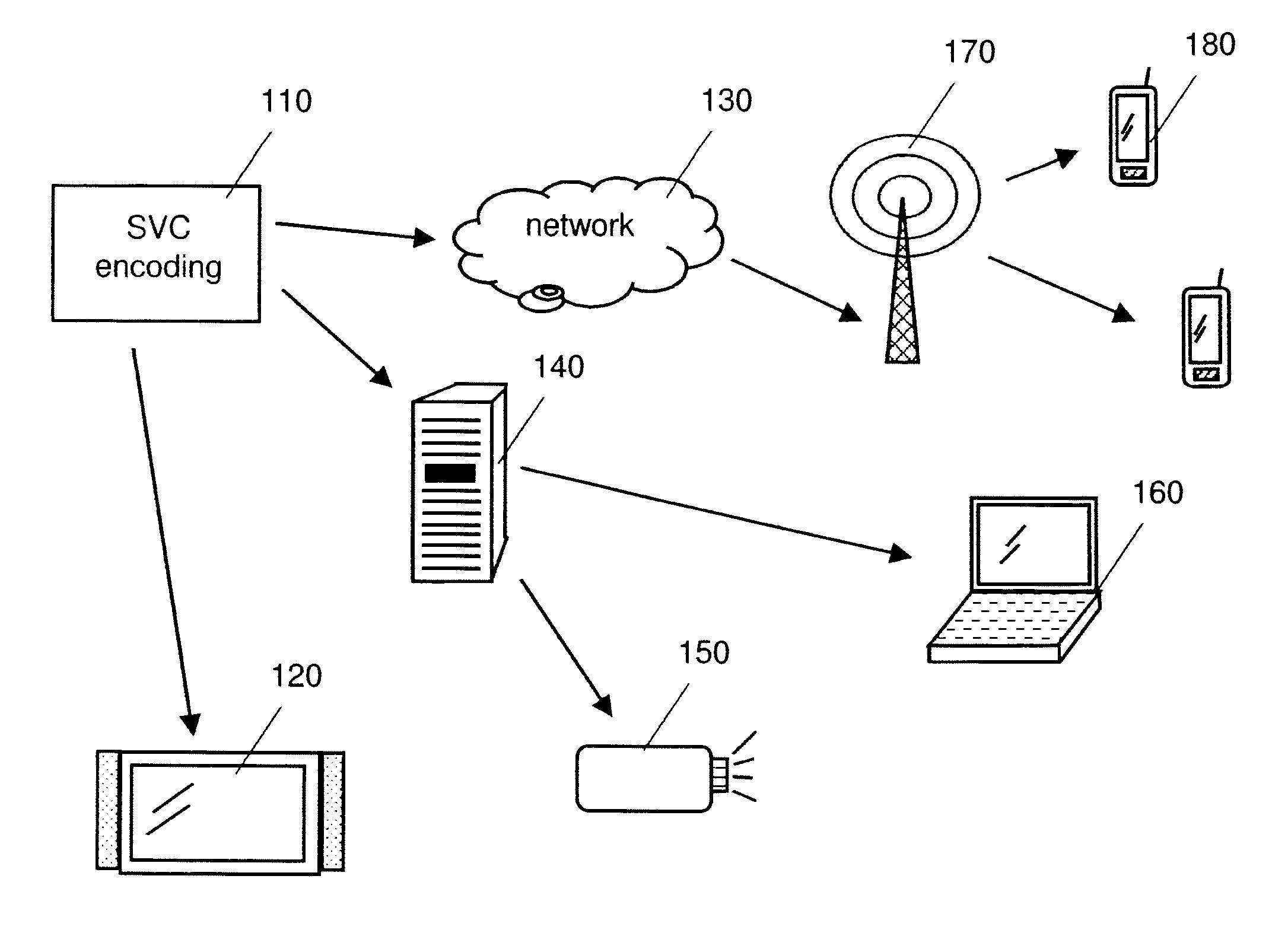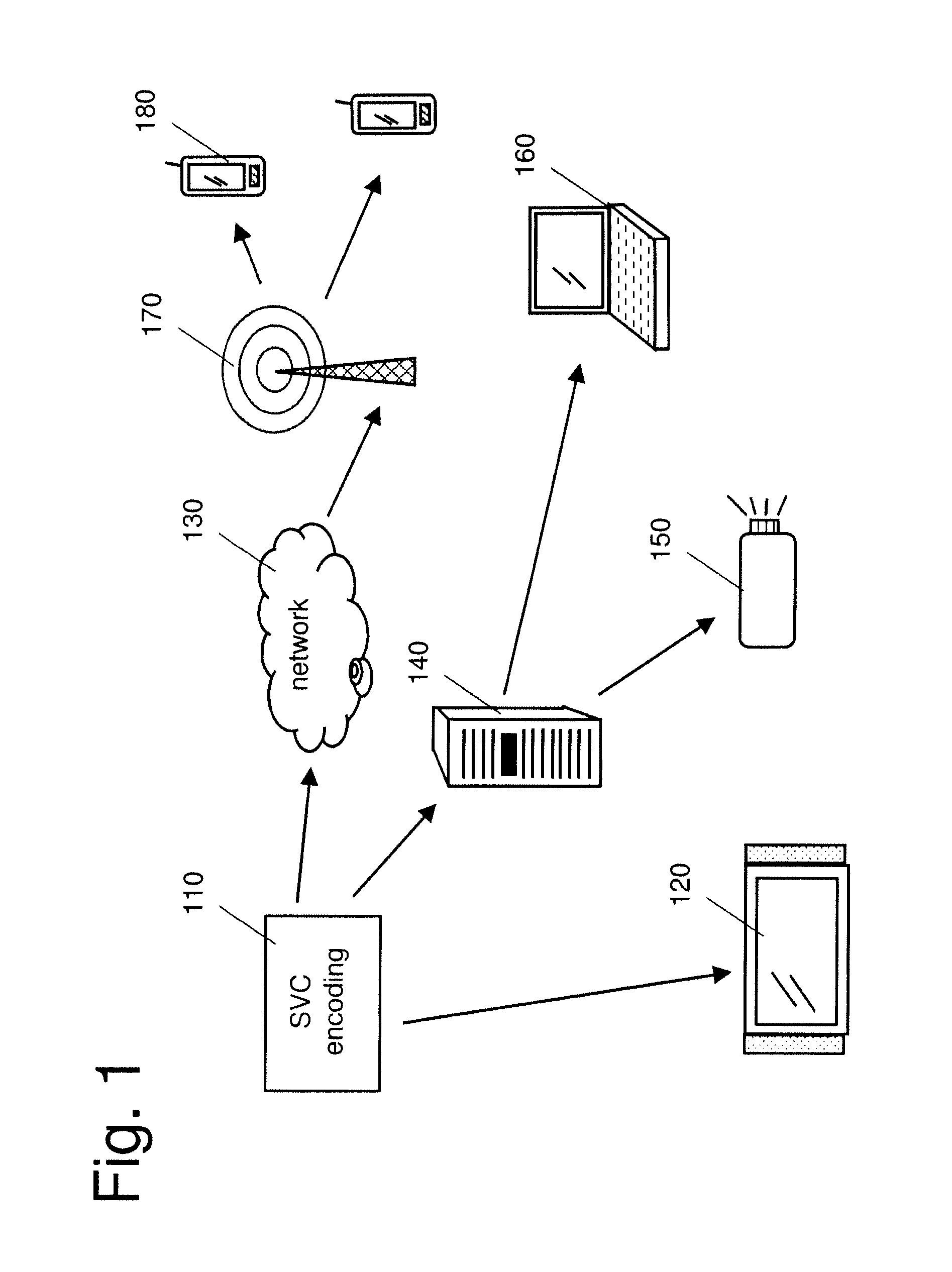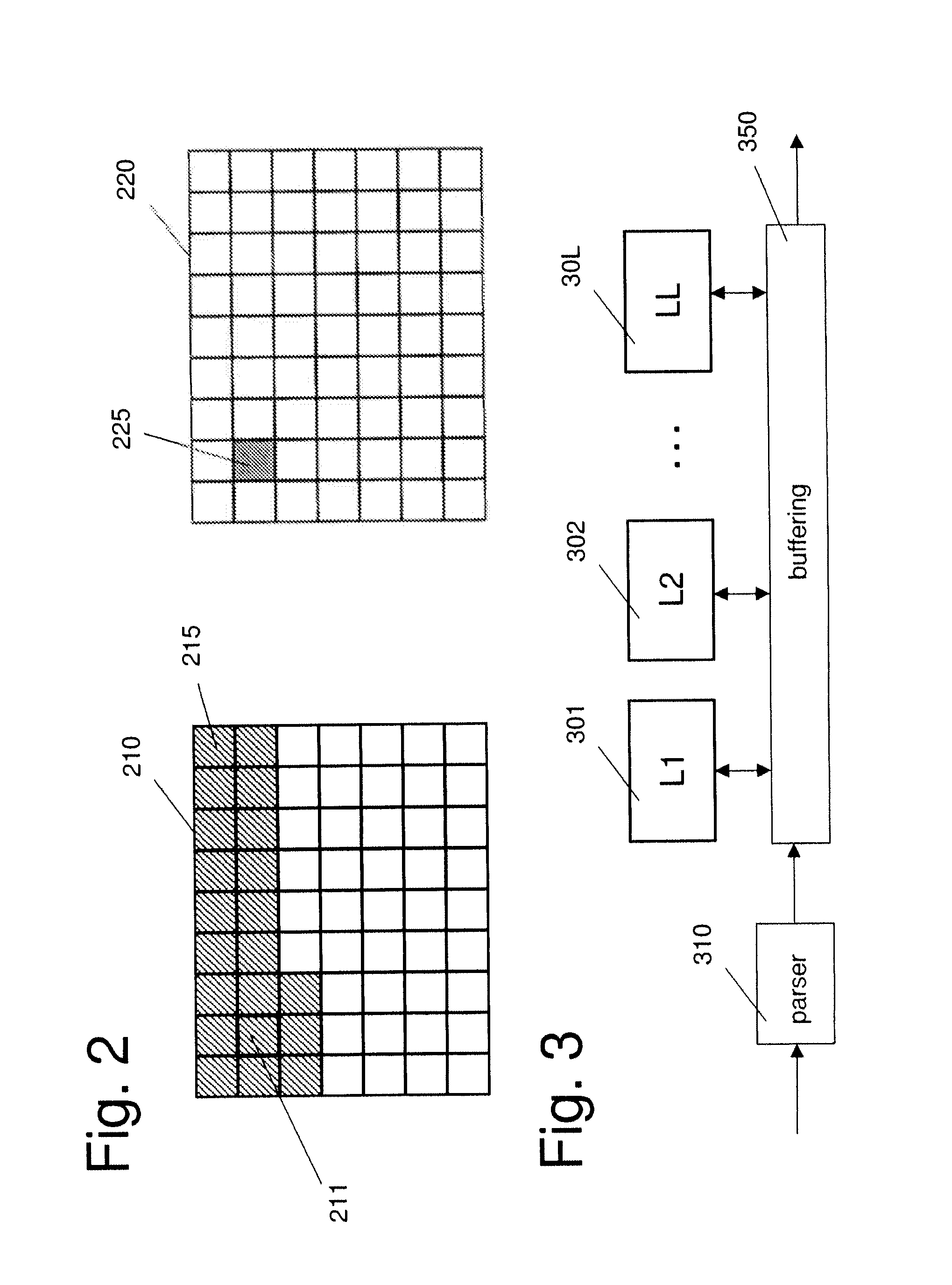Parallel decoding for scalable video coding
a video coding and parallel decoding technology, applied in the direction of color television with bandwidth reduction, signal generator with optical-mechanical scanning, etc., can solve the problems of increasing computational requirements, increasing computational requirements, and increasing the cost of bandwidth-efficient compression approaches, so as to reduce latency
- Summary
- Abstract
- Description
- Claims
- Application Information
AI Technical Summary
Benefits of technology
Problems solved by technology
Method used
Image
Examples
Embodiment Construction
[0036]FIG. 1 illustrates an example of a system in parts of which the present may be employed. The system of FIG. 1 includes examples of video content distribution over different links (channels) with possibly individual bandwidth limitations to various viewing devices with possibly different capabilities. A content provider 110 may provide a video stream encoded using a scalable video coding such as, for instance, the scalable video coding included as the extension in version 8 of H.264 / MPEG-4 AVC standard. Such a video stream may comprise a plurality of different layers so as to provide different devices a possibility to decode only a part of the stream. The entire video stream may be transmitted, for instance, to a set-top box 120 and displayed in its full quality and spatial / temporal resolution. The same stream may be provided to a server 140 which may, for instance, remove some enhancement layers from the stream and transport the resulting modified stream over a channel with a ...
PUM
 Login to View More
Login to View More Abstract
Description
Claims
Application Information
 Login to View More
Login to View More - R&D
- Intellectual Property
- Life Sciences
- Materials
- Tech Scout
- Unparalleled Data Quality
- Higher Quality Content
- 60% Fewer Hallucinations
Browse by: Latest US Patents, China's latest patents, Technical Efficacy Thesaurus, Application Domain, Technology Topic, Popular Technical Reports.
© 2025 PatSnap. All rights reserved.Legal|Privacy policy|Modern Slavery Act Transparency Statement|Sitemap|About US| Contact US: help@patsnap.com



